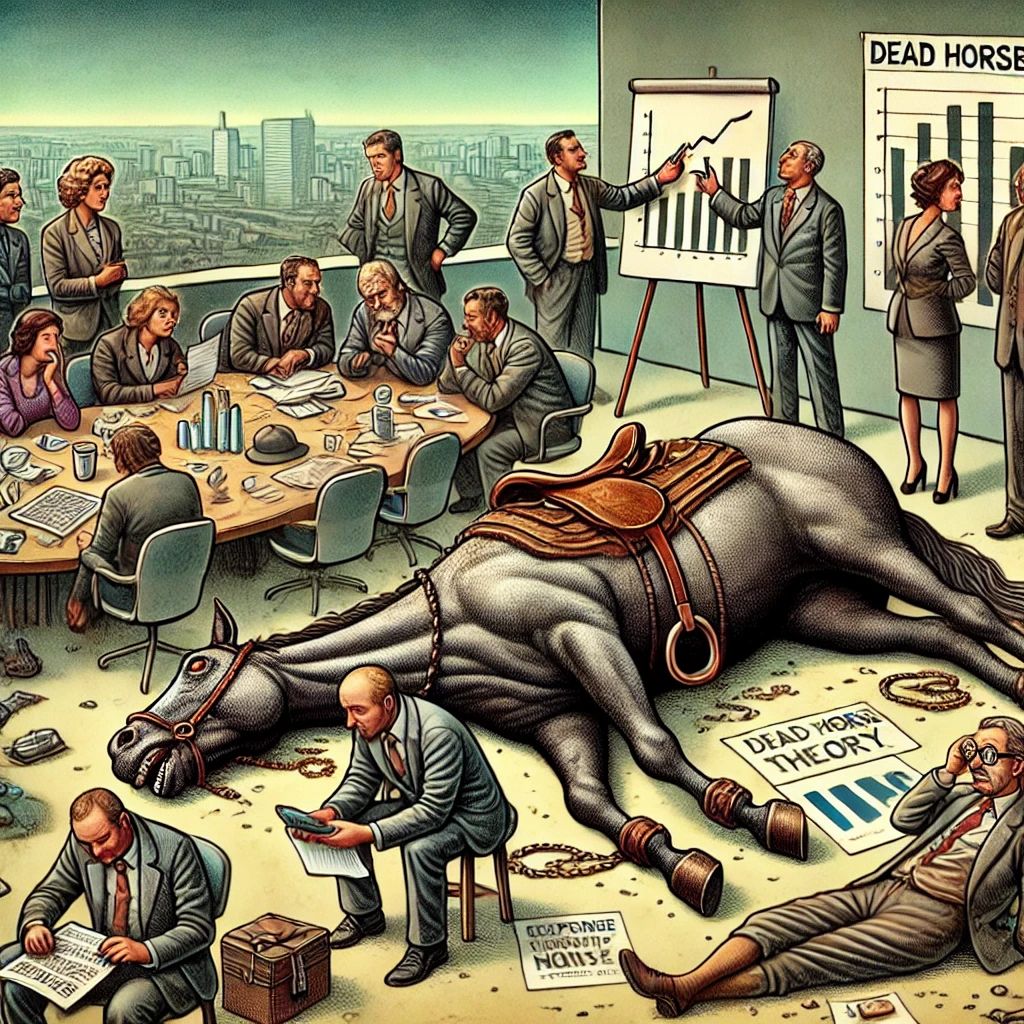When Persistence Becomes a Pitfall: Rethinking HR Through the Lens of the Dead Horse Theory
In the dynamic world of Human Resources, few things are more detrimental than holding on to strategies that no longer serve their purpose. Whether it’s an outdated training module, a rigid performance framework, or longstanding policies designed for a different era, HR teams often find themselves refining, rebranding, or repackaging approaches in an attempt to keep them relevant. The challenge? These initiatives may be structurally improved but remain fundamentally ineffective.
This is where the Dead Horse Theory offers a powerful metaphor.
What Is the Dead Horse Theory?
The theory stems from a satirical observation of human behaviour: “When you discover you are riding a dead horse, the best strategy is to dismount.” Yet, in many organizations, the response is the opposite. We buy a stronger whip, change the rider, form a committee to study the horse or invest in new saddles—anything but acknowledging the need to stop riding the dead horse altogether.
Applied to HR, this means persisting with programs or processes that no longer deliver value despite signs, data, and feedback indicating they’ve run their course.
The Cost of Not Letting Go
The consequences of this resistance are subtle but significant. Resources—time, budget, and talent—are channelled into refining what no longer works. Employees become disengaged with repetitive, irrelevant training. Performance management tools become compliance exercises rather than strategic assets. Culture initiatives lose traction when they no longer resonate with current workforce realities.
Ultimately, this creates a widening gap between HRHR’s potential as a strategic partner and its perceived effectiveness across the organization
Outstanding HR Leadership: Knowing When to Let Go
True leadership in HR isn’t just about persistence—it’s about discernment. It’s about recognizing when a well-intended initiative has reached the end of its usefulness and having the courage to let it go.
Here’s what that looks like in practice:
Use Data, Not Assumptions
Effective HR leaders use data-driven insights to evaluate impact. Regularly measuring engagement, retention, performance outcomes, and learning effectiveness can reveal when programs stop delivering value. Objective evidence, not legacy or emotional investment, should guide decisions.
Encourage a Culture of Adaptability
Creating space for experimentation and iteration fosters a culture that sees change not as a failure but as progress. When teams feel safe to question existing norms, innovation thrives.
Focus on Outcomes, Not Activities
HR should align every initiative with measurable business outcomes. Is the leadership program building better leaders? Is the performance process improving productivity and engagement? If not, it may be time to rethink—not revise.
Lead with Transparency and Intent
Discontinuing a longstanding program doesn’t have to be viewed as a defeat. Framing the decision around evolving business needs and a commitment to excellence builds trust and positions HR as a responsive, strategic function.
Moving Forward: Invest in What Matters
Letting go isn’t always easy, primarily when significant time and effort have been invested. However, outstanding HR leadership is defined not by what is held onto but by what is courageously released. The future of HR depends on our ability to evaluate initiatives honestly, respond to changing realities, and reinvest our energy where it truly matters.
The next time you’re tempted to repackage a policy or restructure a framework, ask yourself: Are we trying to revive a dead horse? Or is it time to dismount and lead the way to something better?



